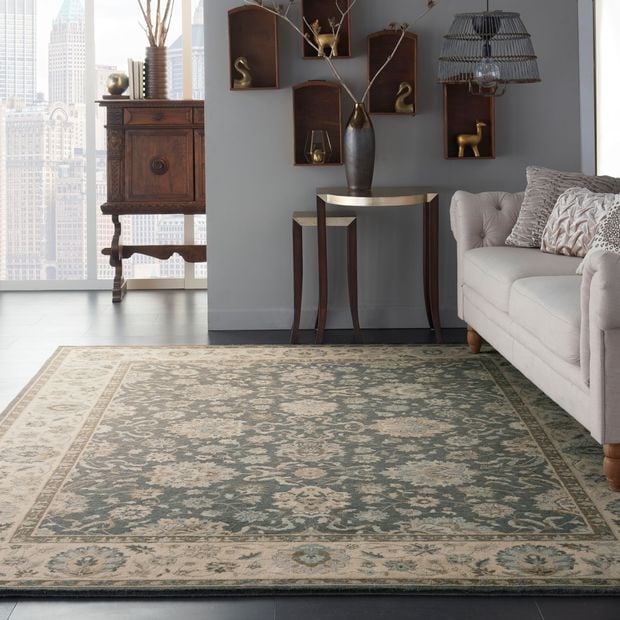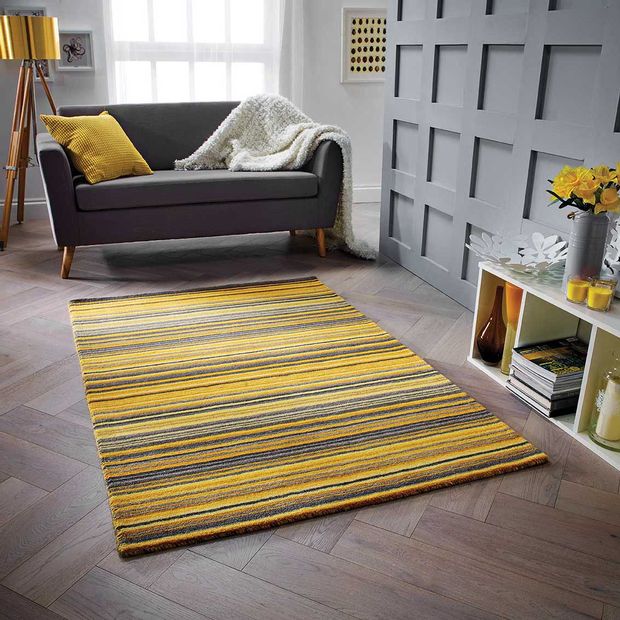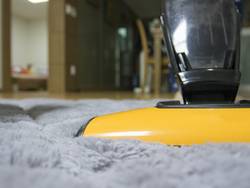Why Do Wool Rugs Shed & How To Make A Wool Rug Stop Shedding

One of the most frustrating things about woollen rugs is when they begin shedding, causing them to lose their original shape as well as feel. Shedding can not only damage the appearance of your woollen rug, but also cause mess and can even become dangerous if swallowed by pets or kids.
Fortunately, there are some simple and highly effective ways on how to make your wool pile rug stop shedding.
It’s worth noting that if you’ve recently purchased your wool rug, either from Rugs Direct or elsewhere, early shedding is common. However, if this continues for more than a few months, then there may be a few factors contributing to this.
Before we continue, if you are in the process of buying a new wool pile rug due to your old one shedding too much and losing its fibre and comfort, why not take a look at our cosy wool and shaggy rug collection? Our wool rugs are designed with durability and comfort in mind, and you won’t find our rugs shedding after a few months!
Before knowing how to make a wool rug stop shedding, you will need to know how the rug was made and what it’s made from.
First, the Material

The lifespan of your wool rug and how much it’s prone to shedding will depend on the material(s) it’s made from. Wool pile rug materials vary in quality depending on the supplier you buy from, as well as the different types of wool. For example, wool from sheep can vary massively in quality – wool taken from mountainous sheep is often far more durable and has a noticeably higher quality than sheep reared in lower lands (their wool is typically rougher).
Most wool rugs aren’t 100% wool and opt for using adhesives to help bind and fortify the surrounding wool for a fuller, more comfortable finish. However, with the inclusion of adhesives comes the risk of shedding. Overtime, the adhesive breaks down and the tiny pieces break away from the wool rug, which is why you should always go for a rug that is either 100% wool or close to it.
Note: It’s worth remembering that all rugs, whether they’re wool or not, are prone to wear and tear over the years. However, you can extend the lifespan by buying a quality rug from Rugs Direct. We offer every type of rug imaginable, from wool and shaggy rugs to durable flatweaves, outdoor rugs and traditional Persian, Moroccan and oriental style rugs.
Second, the Make
The other major factor is how the rug was made. There are a few main ways rugs are made, which are:

- Hand-made rugs are created with personal care and dedication to offer better structural stability
- Hand-knotted rugs are made from thousands, sometimes millions of threads that are knotted to the rug’s donations
- Hand-woven rugs are made by passing a warped through the carpet’s weft, this means every part of the rug plays a part in retaining a sound structure and generally enhancing durability to withstand heavy foot traffic
Then there are the more modern techniques, which generally revolve around machines creating rugs. One of the most common techniques is known as hand-tufting, which uses a tufting gun that lays fabric “tufts” (hence the name) onto the rug pad, which are then glued.
The glue keeps the tufts in place, but this technique doesn’t lend itself to durability or longevity, as the glue can come loose and cause the rug to shed over time. Constant foot traffic will also see these types of rug shed faster and more frequently than the other three rug designs.
Machine-made rug’s main benefit to the consumer is price. Quality, hand-made wool rugs can be expensive, but with this comes less shedding, fewer loose fibres and generally higher quality and far more comfortable rug.
Finally, the Bigger the Budget, the Better the Wool Rug
Simply put, if your rug is of poorer quality (i.e., mostly machine-made), it’s prone to quicker wear and tear and fibre loss. Wool pile rugs that are hand-made have better structural integrity and durability.
Although it requires a bigger budget, always opt for superior quality wool rugs from reputable sources like Rugs Direct. We offer 100% wool rugs among other wool and cotton alternatives to offer our customers a rug that retains its exceptional levels of comfort and durability throughout the years.
How to Make a Wool Rug Stop Shedding
Now, if you’ve already bought a wool rug and have noticed it’s shedding more than it should, here are a few key tips to help minimise the shedding.
1. Buy a rug rake or brush to care for your wool rug
Using a special rug rake, rake or brush your wool carpet outside to remove any remaining loose fibres. This should be done weekly to ensure the rug remains fresh and clean, removing any loose debris and fibres.
2. Trim the tufts
If tufts of wool are emerging above the rug’s surface, using a sharp pair of scissors, trim the tops to remove that fuzzy appearance. It’s common for wool pile rugs to experience some light fraying, and by trimming the tops, your rug not only feels better to touch, but also looks cleaner and cosier. Trimming the frayed ends can also help to shed because it’s these frayed ends that end up being part of the shedding. Run your hand over the rug and collect any loose ends and pop them in the bin.
3. Vacuum your rug
A nice and easy one! Regularly vacuuming your rug can help clean out and remove any loose fibres that cause shedding. If your wool rug is relatively new, it’s important to vacuum it at least once or twice a week, as this is when it’ll be most prone to shedding. Avoid heavy-duty vacuums as these can rip and damage the rug.

There you have it, there are the main ways on how to make a wool rug stop shedding! If you’re in the process of purchasing a brand new wool rug, why not explore our range of 100% wool rugs? You will have less to worry when it comes to maintenance and upkeep of your wool rug and we can personally guarantee their premium quality. For more on rug care, take a look at our handy guide on how to care for your rugs.